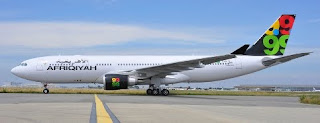by B. N. Sullivan

Today, 54 UPS pilots were furloughed -- the first of at least 300 pilots slated to be laid off by the carrier in coming months. The
furloughs were announced in February of this year, and are the first ever for UPS.
"At a time when the number one issue for most Americans is creating jobs, UPS is creating unemployment," said Captain Robert Thrush, President of the Independent Pilots Association (IPA).
The IPA, which represents the 2,800 UPS pilots, had worked with the company during the past year to save $117 million via a Voluntary Jobs Protection Program. According to the union, the UPS pilots were able to generate cost savings for UPS by: taking reductions in flight pay guarantees; taking unpaid leaves of absence; participating in job sharing; taking military leave; contributing unused sick bank time; and taking early retirement. The IPA said in a press release that the savings created by the program should have been "enough to keep these 300 pilots employed well into 2011."
Captain Thrush said, "This all came to a crashing halt on January 11 when UPS pulled a bait and switch. They told us that they now needed $244 million in savings through 2015, and that its preference was for 'compulsory savings' – UPS speak for furlough.
"While we were taken back by UPS almost doubling its original request and tacking on an additional four years, our pilots didn’t flinch. They were more than willing to step-up, extend and expand the Voluntary Jobs Protection Program to cover UPS's demands, and keep the 300 employed," Thrush continued.
Nevertheless, in February UPS told the IPA that the company was unwilling to continue the voluntary savings program or anything similar. Instead, the coming furloughs were announced.
At that time, UPS Airlines President Bob Lekites said in a press release, "This is a painful decision for our people, but one that is right for the on-going health of our business."
Then Lekites went on to say, "Companywide, we will continue to evaluate all opportunities and make adjustments as necessary to ensure our company is well-positioned to emerge stronger than ever as the economy continues to recover. We applaud our pilots for the way they've joined with UPS in trying to tackle this problem and hope we can identify a mutually beneficial outcome."
Those statements did not sit well with the pilots' union.
Says Captain Thrush, "What I find the most galling are the disingenuous statements in the UPS press release. They mockingly hold out hope that the furloughs may be mitigated, averted, or eliminated; and shamefully attempt to place blame on the pilots for somehow failing to act.
"At a time when unions are being excoriated, and blamed for a litany of economic ills it's important to remember that one union covered the cost to save 300 jobs – instead UPS chose to create unemployment and add to local, county, state and federal unemployment and social services rolls."
 The US National Transportation Safety Board (NTSB) has released its final report on the now-famous ditching of a US Airways Airbus A320 in the Hudson River on January 15, 2009. Readers will recall that US Airways Flight 1549 lost power in both engines due to a multiple bird strike while climbing out from New York's La Guardia Airport. All 155 crew and passengers on board survived.
The US National Transportation Safety Board (NTSB) has released its final report on the now-famous ditching of a US Airways Airbus A320 in the Hudson River on January 15, 2009. Readers will recall that US Airways Flight 1549 lost power in both engines due to a multiple bird strike while climbing out from New York's La Guardia Airport. All 155 crew and passengers on board survived.








